| Full size cases (82x33cm or more) | |||||
|---|---|---|---|---|---|
| No vertical bar No boxes |  | May have central bar. May have slots for adjustable rows. | Example | Cases | |
| No vertical bar Does have boxes |  | May have several rows. cases for borders, figures, leads, rules, spacing | Example | Cases | |
| One vertical bar (Upper Case) and see Notes |  | Most boxes the same. Usually 7 rows, but can vary. Rows may be diferent sizes. Central bar may be off-centre. | Example | Cases | |
| One vertical bar (Lower Case) and see Notes |  | Many different sized boxes | Example | Cases | |
| One vertical bar (Other full-size Cases) |  | Many styles Border, Figure, Music, Arabic, etc. | Example | Cases | |
| One vertical and one horizontal bar |  | 4 similar bays, with 4, 6 or 7 rows each | Example | Cases | |
| Two vertical bars |  | 3 similar bays, usually with 7 rows each | Example | Cases | |
| Double Case and see Notes |  | Different sized bozes. May have 7, 6 or 5 rows in the right hand bay. | Example | Cases | |
| Job Case and see Notes |  | Differs from Double, above, as has one more box in central bay. May have 5, 6 or 7 rows in right hand partition. | Example | Cases | |
| Two vertical and one horizontal bar |  | 6 similar bays, with 4 rows in each | Example | Cases | |
| Three vertical bars |  | 4 similar bays, usually with 7 rows each | Example | Cases | |
| Four vertical bars |  | 5 similar bays, usually with 7 rows each | Example | Cases | |
| Full size but squarer cases (65x49 to 76x61cm) | |||||
| Single Case | 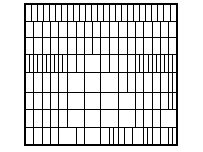 | No bays Many variations in the number of boxes, etc. | Example | Cases | |
| Single Case | 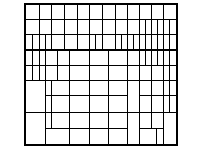 | Two bays Many variations in the number of boxes, etc. | Example | Cases | |
| Single Case | 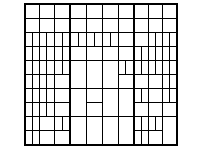 | Three bays Many variations in the number of boxes, etc. | Example | Cases | |
| Single Case | 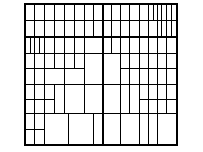 | Four bays Many variations in the number of boxes, etc. | Example | Cases | |
| Single Case | 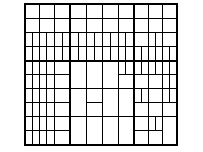 | Five, six or nine bays Many variations in the number of boxes, etc. | Example | Cases | |
| Smaller sized cases (67x42cm or less) | |||||
| Two Third, Half, etc. Cases | 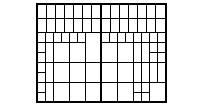 | Two Third, Half, Three quarter,etc. | Example | Cases | |
| All empty cases ie with the boxes left blank | All type layouts ie with characters assigned to boxes | ||
| Full Index of layouts | Glossary of terms used | Sources of the layouts | Introduction |
| Quantities in a fount of type | Quantities in a case of type | ||
| Notes about Job and Double Cases | Notes about Upper cases | Notes about Lower cases | Alembic home page |
This page was written in 2014 by David Bolton and last updated 19 January 2015